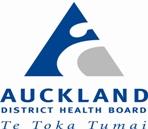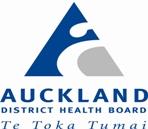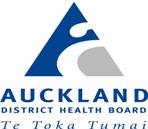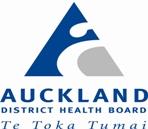link to page 1 link to page 2 link to page 2 link to page 3 link to page 4 link to page 5 link to page 5 link to page 5 link to page 5 link to page 6 link to page 6 link to page 6 link to page 7 link to page 7 link to page 7


If printed, this document is only valid for the day of printing.
Restraint Minimisation and Safe Practice in Mental Health
Document Type
Policy
Function
Clinical Practice
Directorate(s)
Mental Health & Addictions (MH&A)
Department(s) affected
All services within MH&A
Applicable for which patients, clients All tangata whai i te ora / service users within MH&A
or residents?
Directorate
Applicable for which staff members? All clinicians within MH&A Directorate
Key words (not part of title)
Use of Force, Personal Restraint
Author – role only
Specialist Allied Health Professional, Seclusion and
Restraint Reduction
Owner (see
ownership structure)
Director of Mental Health and Addictions Directorate
Edited by
Clinical Policy Advisor
Copy edit by Document Controller
Formatting by Document Controller
Proofreading by Document Controller
Date first published
October 2008
Date this version published
January 2016
Review frequency
3 yearly
Unique Identifier
PP40/RBP/030
Contents
1.
Purpose of policy
2.
Policy statements
3.
Definitions
4.
Use of personal restraint – initiation
5.
Monitoring of service user
6. Discontinuation
7.
Documentation 8.
Evaluation and review
9.
Education and training 10.
Legislation 11.
Associated Auckland DHB documents
12.
Disclaimer 13.
Corrections and amendments
Back to Contents
Restraint Minimisation in MH&A 2016-01-15.docx
Page 1 of 7
link to page 1 link to page 3


If printed, this document is only valid for the day of printing.
1. Purpose of policy
This policy outlines the commitment to:
Reducing the use of force/restraint within MH&A Directorate
Encouraging restraint free processes as far as possible
Ensuring that when personal restraint is clinically indicated it is undertaken in a safe and
respectful manner by appropriately trained staff member
This policy ensures compliance with the legal requirements and standards set out in:
Section 122B of the Mental Health (Compulsory Assessment and Treatment)Act 1992; and
The Health and Disability Services (Restraint Minimisation and Safe Practice) Standards (NZS
8134.2:2008)
2. Policy statements
Restraint is a serious intervention requiring clear clinical rationale, close monitoring and oversight.
Restraint is viewed in the wider context of risk management and is one of a number of strategies
that can be used to manage instances of high-risk behaviour.
There are a number of different interventions, which may constitute ‘restraint’ – see section 3
Definitions
Personal restraint must only be used as a last resort after alternative, less restrictive interventions
have been exhausted (examples include but are not limited to appropriate cultural and
whānau/family support, sensory modulation, access to activity, enhanced engagement and de-
escalation).
All staff members working in Auckland DHB MH&A Directorate must be aware of the potentially
harmful physical and psychological effects of restraint, particularly for individuals with a known
trauma history.
All forms of restraint used within Auckland DHB MH&A Directorate require approval through the
Less Restrictive Practices Governance Group.
Back to Contents
Restraint Minimisation in MH&A 2016-01-15.docx
Page 2 of 7
link to page 1


If printed, this document is only valid for the day of printing.
3. Definitions
The following terms are used within this document:
Service User:
Used to refer to tangata whai ite ora, service users, consumers, patients and users of all Auckland
DHB Mental Health and Addictions services
Use of Force / Restraint:
Use of force / restraint is the implementation of any forcible control by a service provider that:
Limits the actions of a service user in circumstances in which the individual is at risk of injury or
of injuring another person
The intentional removal of the individual’s normal right to freedom.
As per the Restraint Minimisation and Safe Practice Standard NZS8134.2:2008) restraint can be
divided up into distinct categories outlined below:
Personal Restraint:
When a staff member/members use their own bodies to intentionally limit the movement of a
service user eg to physically hold the individual.
Physical Restraint:
When a staff member or members of the treating team use equipment, devices or furniture that
limit an individual’s normal freedom of movement eg where a service user is unable to
independently get out of a chair due to the design of the chair, the use of a belt which they cannot
undo themselves or the positioning of a table or fixed tray preventing them from getting up.
The use of fixed belts, equipment or furniture specifically to physical restrain service users in
Auckland DHB MH&A Directorate is not supported.
Note: Use of mechanical restraint in Auckland DHB MH&A Directorate is subject to a separate
policy (Restraint –Mechanical)
Environmental Restraint
This form of restraint can range from a contained environment ie utilising doors and fencing to plan
interventions that reduce the level of social contact and/or environmental stimulation. It can also
refer to restricting liberty by having an individual’s normal means of mobility denied (eg removing
someone’s wheelchair)
Note: Within MH&A Directorate, some of our wards / units are approved as locked environments
and this is as a permanent aspect of service delivery.
The practice of locking open wards in mental health units is at times necessary for clinical reasons –
please refer to local guidelines for each service
Back to Contents
Restraint Minimisation in MH&A 2016-01-15.docx
Page 3 of 7
link to page 1


If printed, this document is only valid for the day of printing.
Enablers
These are equipment, devices or furniture voluntarily used by an individual following appropriate
assessment that limit the normal freedom of movement with the intent of promoting
independence, comfort or safety eg a voluntary use of raised bedsides to assist mobility in bed and
aid positioning.
Both enablers and restraint limit the normal freedom of movement of the consumer. It is not the
properties of the equipment, device or furniture that determines whether it is an enabler or
restraint but rather the intent of the intervention. Where the intervention is to promote
independence, comfort and safety, and the intervention is voluntary, this constitutes an enabler
rather than a restraint.
Trauma
Trauma may be defined as the experience of violence and victimisation including sexual abuse,
emotional abuse, physical abuse, severe neglect, loss, domestic violence and/or the witnessing of
violence, terrorism or disasters.
4. Use of personal restraint
It is recognised that there will be times when the use of personal restraint becomes necessary. In
such situations, it must be utilised for as short a period of time as possible and with the least
possible force, it must be used as a last option, where other, less restrictive options have been
exhausted.
Personal restraint must be initiated only after assessment of the individual’s clinical presentation
(including any identified physical health conditions), and discussion with clinical team (to include
medical practitioner if available).
The underlying cause of current crisis, personal history including known or assumed trauma
history, previous experience of restraint and any advance directives / preferences of the individual
must be considered at this point.
Exceptional crisis situations where immediate high risk is posed to the individual or others may
require emergency use of personal restraint; however, wherever possible discussion and consent
processes must occur with the individual and their whānau / family prior to restraint and
alternatives to personal restraint will be explored.
The decision making process re initiating use of force / personal restraint must be clearly
documented in HCC. If it becomes clear that due to clinical presentation an individual may be at
risk and need more than one episode of personal restraint a care plan must be established
documenting the rationale including decision making process re-use of force / personal restraint.
Back to Contents
Restraint Minimisation in MH&A 2016-01-15.docx
Page 4 of 7
link to page 1


If printed, this document is only valid for the day of printing.
5. Monitoring of service user
During episodes of personal restraint, a registered nurse must closely monitor the service user.
It is essential that the service user’s airway is not obstructed at any time, that only authorised holds
and positioning are used so as to minimise the potential for physical harm / injury.
Adequate physical observations post-personal restraint must be undertaken and staff member
must maintain high awareness of this as a time when risk of physical collapse may be increased.
Any injuries incurred during episode of personal restraint need to be assessed / reviewed as soon
as possible and relevant treatment / care provided.
The above monitoring must be recorded in the individual’s HCC clinical record.
6. Discontinuation of personal restraint
The desired outcome of the use of personal restraint and criteria for ending restraint must be clear
to staff members and explained to the service user.
The decision to discontinue restraint must be undertaken by a registered nurse after careful
assessment that immediate risk issue leading to use of personal restraint have lessened / receded.
Personal restraint must be used for the shortest period of time possible and with the least force
possible.
7. Documentation
All episodes of personal restraint require clear documentation using the ‘Use of Force’ form in HCC,
including alternatives to restraint considered, rationale for initiation of restraint, monitoring,
timeframe, who was involved, alternatives / additional support, evaluation and whether family
members / next of kin have been advised.
Within the general clinical notes / record a more indepth rationale for the decision to use personal
restraint and details of precursors / any identified prompting events or contributing factors.
Evidence of monitoring of both physical condition and mental state must also be entered.
The paper restraint / use of force register must be completed.
Any injuries which incurred during personal restraint, either to service user or staff member, must
be logged via the Risk Monitor Pro system and appropriate first aid / medical attention given.
All legally required documentation – use of force form, paper register and HCC clinical note must
be completed by the service user’s allocated nurse prior to the end of their shift.
Back to Contents
Restraint Minimisation in MH&A 2016-01-15.docx
Page 5 of 7
link to page 1


If printed, this document is only valid for the day of printing.
8. Evaluation and review
An evaluation of the effectiveness of any episode of personal restraint must be undertaken and
documented in HCC by registered nurse and/or clinical team. Ideally the evaluation must include
feedback from the service user on their experience of the situation, what they feel was useful or
not and what might be effective if a similar situation arises again – it is recognised that the service
user may not want to give feedback or that their feedback may come at a later time.
All episodes of use of force / personal restraint must be reviewed by Charge Nurses / Service
Leaders including Consumer Representatives separate to this initial evaluation.
9. Education and training
All staff members working in MH&A Directorate must have access to information and training that
reflects the organisation’s commitment to reducing the use of coercive practice and restraint. The
suite of trainings to support restraint minimisation is focussed on building skill and resource and
includes sensory modulation training, communication and de-escalation training, and Safe Practice
for Inpatient Settings / Safe Practice for Community Settings.
The training provided must be at a level that supports safe practice for staff members in their role,
professional discipline and service.
Staff members employed in Auckland DHB Community based MH&A Directorate are trained in de-
escalation and the use of breakaway techniques rather than in personal restraint. As a safety
precaution for all involved it is expected that the police will attend any situation in the community
that may require personal restraint and take the lead in managing physical containment.
10. Legislation
NZS8134.2:2008 Health and Disability Services (Restraint Minimisation (MH&A) Standards
Crimes Act, 1961
Health and Disability Commissioners Act 1994 (and
Code of Rights)
Health Practitioners Competence Assurance Act 2003
Mental Health
(Responsible Clinician Assignment for Patients under the Mental Health
(Compulsory Assessment & Treatment) Act ) 1992, and
Amendment Act 1999
Privacy Act 1993
The Health & Disability Commissioner (Code of Health & Disability Consumer Rights)
Regulations 1996
Back to Contents
Restraint Minimisation in MH&A 2016-01-15.docx
Page 6 of 7
link to page 1


If printed, this document is only valid for the day of printing.
11. Associated Auckland DHB documents
Detention of Voluntary Service Users
District Inspectors
Informed Consent
Observation - Increased - in Mental Health & Addictions
Police & MoH Memorandum of Understanding (National)
Psychiatrist Availability
Seclusion in Mental Health
12. Disclaimer
No guideline can cover all variations required for specific circumstances. It is the responsibility of
the health care practitioners using this ADHB guideline to adapt it for safe use within their own
institution, recognise the need for specialist help, and call for it without delay, when an individual
patient falls outside of the boundaries of this guideline.
13. Corrections and amendments
The next scheduled review of this document is as per the document classification table (page 1).
However, if the reader notices any errors or believes that the document should be reviewed
before the scheduled date, they should contact the owner or th
e Clinical Policy Advisor without delay.
Back to Contents
Restraint Minimisation in MH&A 2016-01-15.docx
Page 7 of 7













